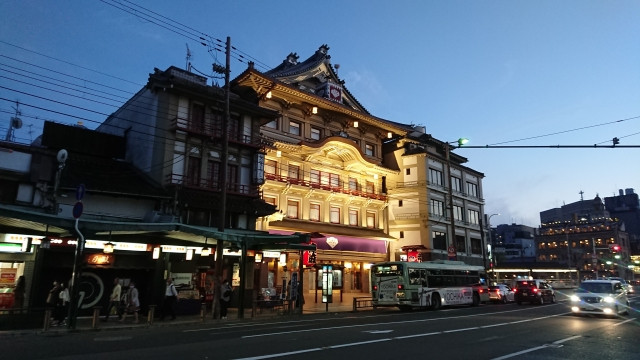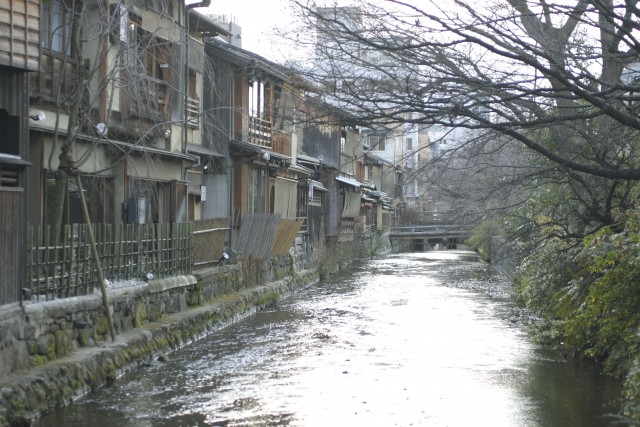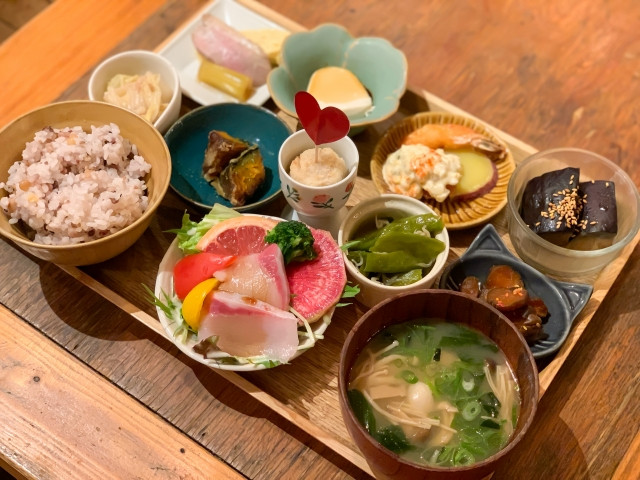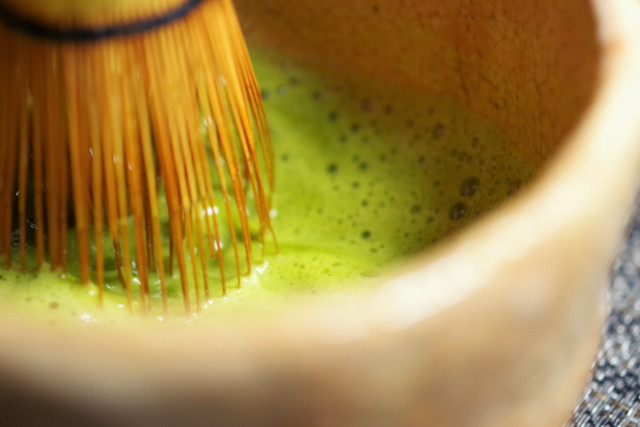Gion is known for its traditional streets with Geisha walking down the alleys; however, Gion is way more than that! Other than geishas and the old street view, let us take a deeper look into the history of as well as the modern day Gion and how to enjoy it.
◆A Brief Look of the History of Gion District
◆Traditional Performing Art to Experience
A Brief Look of the History of Gion District

Gion is famous for being the go-to place for a taste of traditional Japanese townscape; it has a long history as the entertainment district and its location on the way to Yasaka Shrine - where it was known as "Gion Shrine" back in the day. Gion started as a place to rest after praying during the Edo period for visitors coming to Kyoto for shrines and temples from all over Japan.
Many "Chayas (tea-houses)" opened for the travelers during the day to enjoy tea and changed to places to take pleasure in Japanese sake, food, and the entertainment provided by the young women who are known as "geishas" or the apprentices known as "maiko" with dance, music and singing at night. After the Edo period, Gion was still a place for entertainment but the northern part of Gion was modernized after the Meiji period.
On a side note, geishas in Kyoto called themselves “geiko” instead of geishas for its meaning of “women of art.”
Writer's Pick
Traditional Performing Art to Experience
Now we’ll discuss Gion as it is today, starting with where you can experience traditional performing arts.

Kabuki at Minamiza
Located about 7-minute away on foot from Yasaka Shrine, Minamiza is a grand building you will not miss on the corner of Shijo-Dori. There are wide varieties of theatrical performances put on at the theater but you should not miss the kabuki performance with its premium quality. The original building was founded in 1610 then rebuilt by The Shochiku Company, one of the largest and oldest film/kabuki productions in Japan, in 1929 with 1,086 seats.
The theater is open for performances for an admission fee ranging from 3,000 to 10,000 yen; the further from the stage, the cheaper it gets. Also, if you ever have a chance to enjoy a kabuki performance at the theater, do not take pictures nor use your cell phone during the act. There are plentiful intermissions throughout the hour-long performance for you to check your cell phone. For fans of the actors or for those who would like to keep the memory forever, viewers can buy postcards with photographs of the show afterwards.
Geiko (Geisha) Performance at Chayas along Hanamikoji
Hanamikoji, also called "Hanami Lane," is famous for its traditional Japanese wooden buildings and also "chayas'' to enjoy an exclusive performance of dancing and singing from geishas. A chaya is written as "tea-house" in Kanji but they do not offer tea; you also cannot walk into a chaya and expect a performance without an introduction by someone and it is very expensive to enjoy a meal with geishas and maikos with delightful conversations and drinking games.
Though it is originally an exclusive experience to dine with geishas and maikos, there are some travel agencies and hotels offering lunch or dinner packages with a maiko to tourists who can afford it.
Various Traditional Arts at The Gion Corner
Travelers can access traditional performances such as a tea ceremony, ikebana (flower arrangement), bunraku (Japanese puppet theater), Kyogen (Japanese comic theater), and Japanese dance by two maikos at Gion corner located at the end of Hanamikoji. These performances are created as a display of traditional arts and are performed twice a day at 6 pm and 7 pm.
Strolling around Gion
Yasaka Shrine
During the Edo period, Yasaka Shrine was known as Gion Shrine, one of the most visited destinations in Kyoto going back over 1350 years. The hundreds of lanterns that get lit in the evenings add a mysterious atmosphere at night; these lanterns are not for decoration but have the names of local businesses who donated to the shrine.
Gion Festival is usually held every July with a month-long schedule of events at different areas in Kyoto to purify and to calm the disease-causing existences. The festival was originally held to give offerings to gods during an epidemic back in 869. There was a local boy selected who would not be able to touch the ground from 4 days before the main parade on July 17th; the tradition is kept until today. He is carried on a large float during the parade. With the spread of COVID-19 in 2020, the Gion Festival was canceled.
Other than the festival to participate in, people visit Yasaka Shrine to wish for varying aspects of life but it is renowned for prayers for beauty and good relationships.
Shirakawa Dori

Shirakawa Dori is located in Gion and has the meaning of "white river street." The street is free of the wires for travelers to truly take a look at the traditional wooden buildings and the river is lined with willow trees.
Shijo-dori
Shijo-dori is where you get to see high-end luxury brands and souvenir stores lined up right next to each other. Being a popular shopping destination not only for travelers but also locals, it is usually packed with people at night. There are several department stores for those who have exquisite eyes, namely Takashimaya, Daimaru, and Marui. It is also where Kiyamachi-dori is, a beloved drinking district with Kamo River running parallel to the street; you can find outdoor seatings alongside the river for all kinds of cuisines or Izakayas, and bars with distinct tastes.
Treat your Taste Buds in Gion
There are various dishes and snacks that can be enjoyed at Gion including high-end Kyo Ryori restaurants, Kyoto's famous tofu cuisine, and matcha (Japanese green tea) sweets.
Kyo Ryori (Kyoto Cuisine)

Kyo Ryori is known for its delicacy and sophistication with the presentation of dishes in different colors, sizes, and textures following seasonal and local ingredients from Kyoto often cooked with carefully made dashi (soup stock). As Kyoto was the original capital, Kyoto cuisine has a history of more than 1,200 years. There are many Kyo Ryori restaurants located in Gion; many of them are reservations only so be sure to check their website or call first!
Tofu Cuisine

You can definitely have tofu anywhere in Japan and can often be easily bought at any supermarkets even in your home country; however, because of the water quality in Kyoto being one of the best for making tofu, ever since the Edo period, Kyoto is known for having the creamiest and silkiest tofu in Japan. Boiled tofu (yu-tofu) became a famous cuisine from Kyoto; foodies are able to enjoy tofu's original flavor by dipping the tofu into soy sauce and ginger paste before eating.
Matcha (Japanese green tea) Sweets

For Kyoto being the home of Uji, Japanese green tea sweets are certainly must-haves when you visit Kyoto; Gion is where one of the most famous brands, Gion Tsujiri, began to expand their business by the end of the war in 1948. In 1970, they opened their first tea cafe "Saryo Tsujiri" above their original flagship store in Gion. Saryo Tsujiri serves traditional matcha, modern matcha sweets like parfaits, and traditional sweets such as anmitsu and zenzai.
In Conclusion
As a Kyoto lover who has already visited more than three times, I find myself falling in love with this city over and over again whenever I visit it. However, Gion in the present days are not only about the traditional night entertainment but also modern-day nightlife that travelers should be cautious of. Nevertheless, Gion is still one of my favorite places in Kyoto and as a superstitious person like me, paying a visit to the Yasaka Shrine is a must. Hope you enjoy your time at Gion more with this article and falling in love with Kyoto just like me!









.jpg)



















